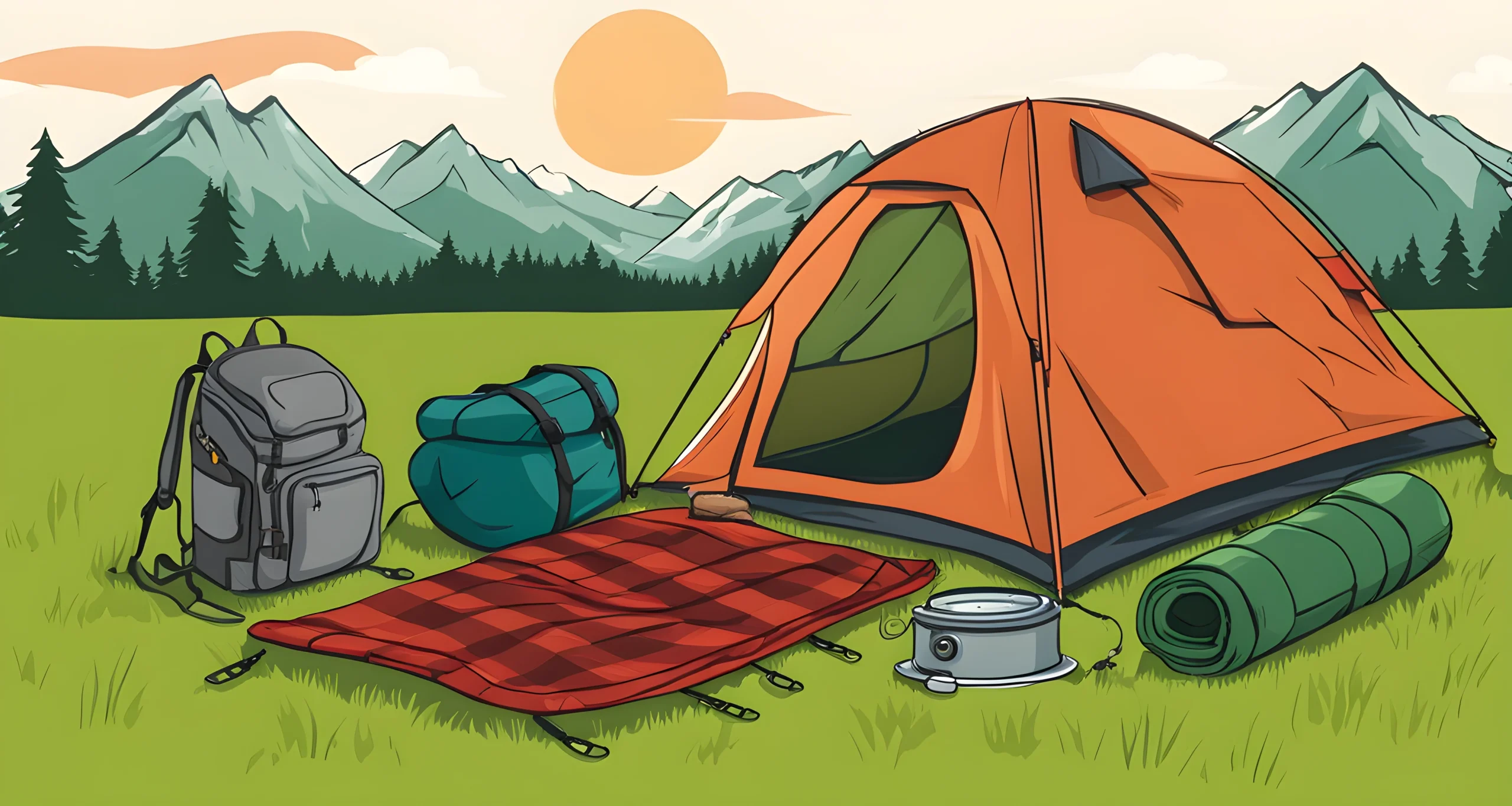Introduction
Welcome to "Budget Backpacking Essentials: Must-Have Gear for Backpackers"! If you’re planning a budget backpacking trip, it’s crucial to consider the gear you’ll need for your journey. Choosing lightweight and compact essentials will not only save you money but also make your trip more enjoyable.
Essential Gear
- Tent: Consider a lightweight option like the Big Agnes Fly Creek to provide you with a safe and comfortable shelter without adding too much weight to your pack.
- Sleeping Bag: Opt for a synthetic option such as the Sierra Designs Cloud 20 to keep you warm and dry without breaking the bank.
- Sleeping Pad: A comfortable sleeping pad like the Klymit Insulated Static V will ensure you get a good night’s sleep without taking up too much space in your pack.
By choosing these essential items, you can be confident that you’ll have a safe and comfortable shelter and sleep system without weighing yourself down with bulky or expensive gear. So, get ready to embark on an amazing budget backpacking adventure!
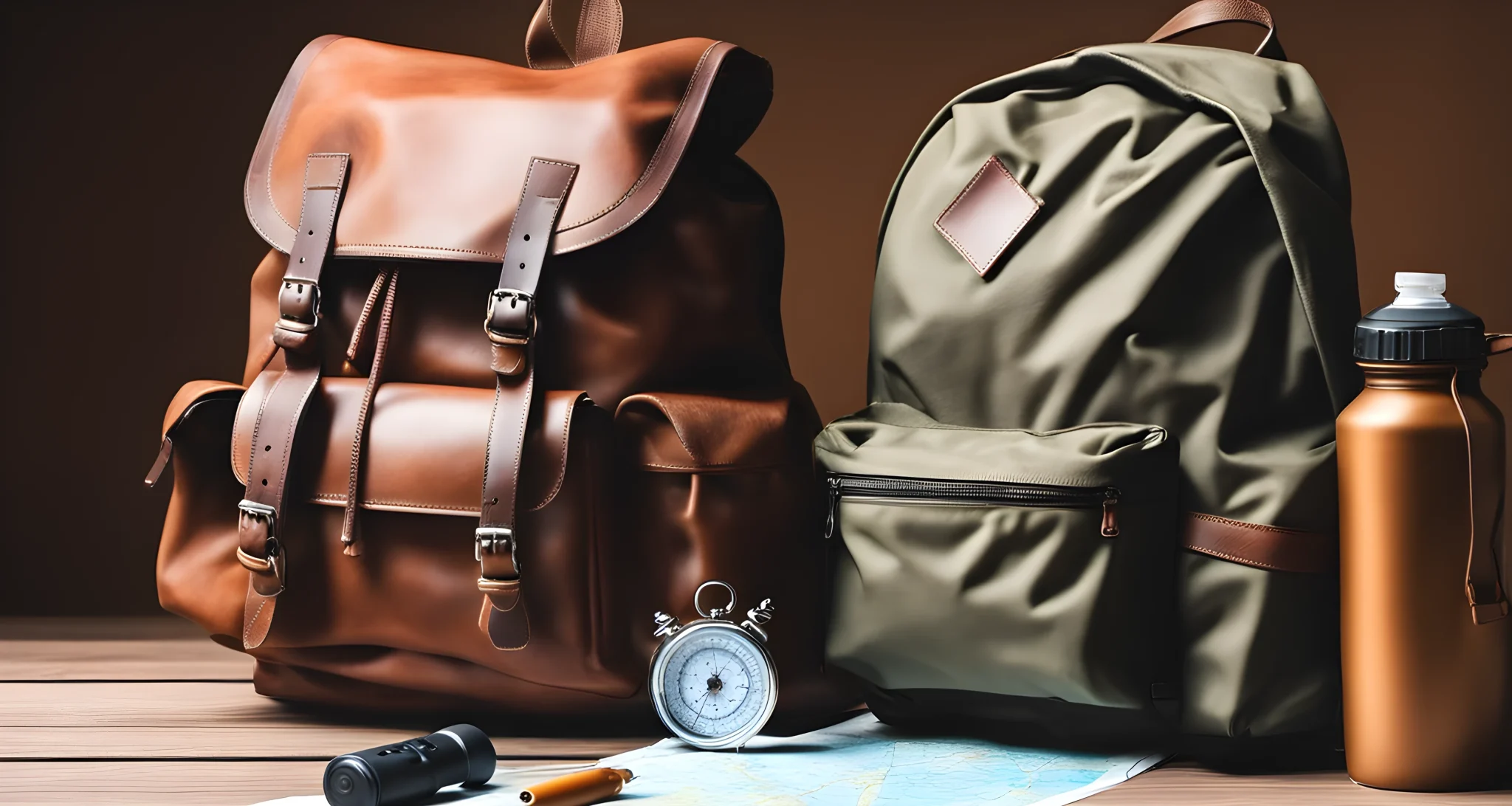
Choosing Your Destination and Duration
When planning a budget backpacking trip, it’s important to carefully consider your destination and the duration of your adventure. Here are some key points to keep in mind:
Research Your Destination
- Consider the Cost: Research the average costs of accommodation, transportation, food, and activities in your chosen destination. Websites like Budgeting for extended trips abroad can provide valuable insights into creating a travel budget for your destination.
- Safety and Accessibility: Ensure that your chosen destination is safe for backpackers and easily accessible within your budget. Look for affordable transportation options and consider any visa requirements or travel restrictions.
Duration of Your Trip
- Time Constraints: Determine how much time you have available for your backpacking trip. Consider any time constraints such as work or school schedules, as well as the seasons and weather conditions at your destination.
- Budget Considerations: Longer trips may require more careful budgeting and planning. Be realistic about how much time you can afford to be away and how it will impact your overall budget.
GPS Unit and Emergency Communication
When venturing into remote areas, navigation and safety are crucial. Consider carrying a GPS unit and a paper map for reliable navigation. Additionally, an emergency communication device like the InReach SE can provide added safety and peace of mind during your trip.
First Aid Kit and Essential Gear
It’s important to be prepared for any unexpected situations during your backpacking trip. A well-stocked first aid kit, along with a reliable headlamp and extra batteries, will ensure that you’re ready for any challenges that may arise.
By carefully considering your destination and the duration of your trip, as well as ensuring you have essential gear for navigation and safety, you’ll be well-prepared for an unforgettable budget backpacking adventure.
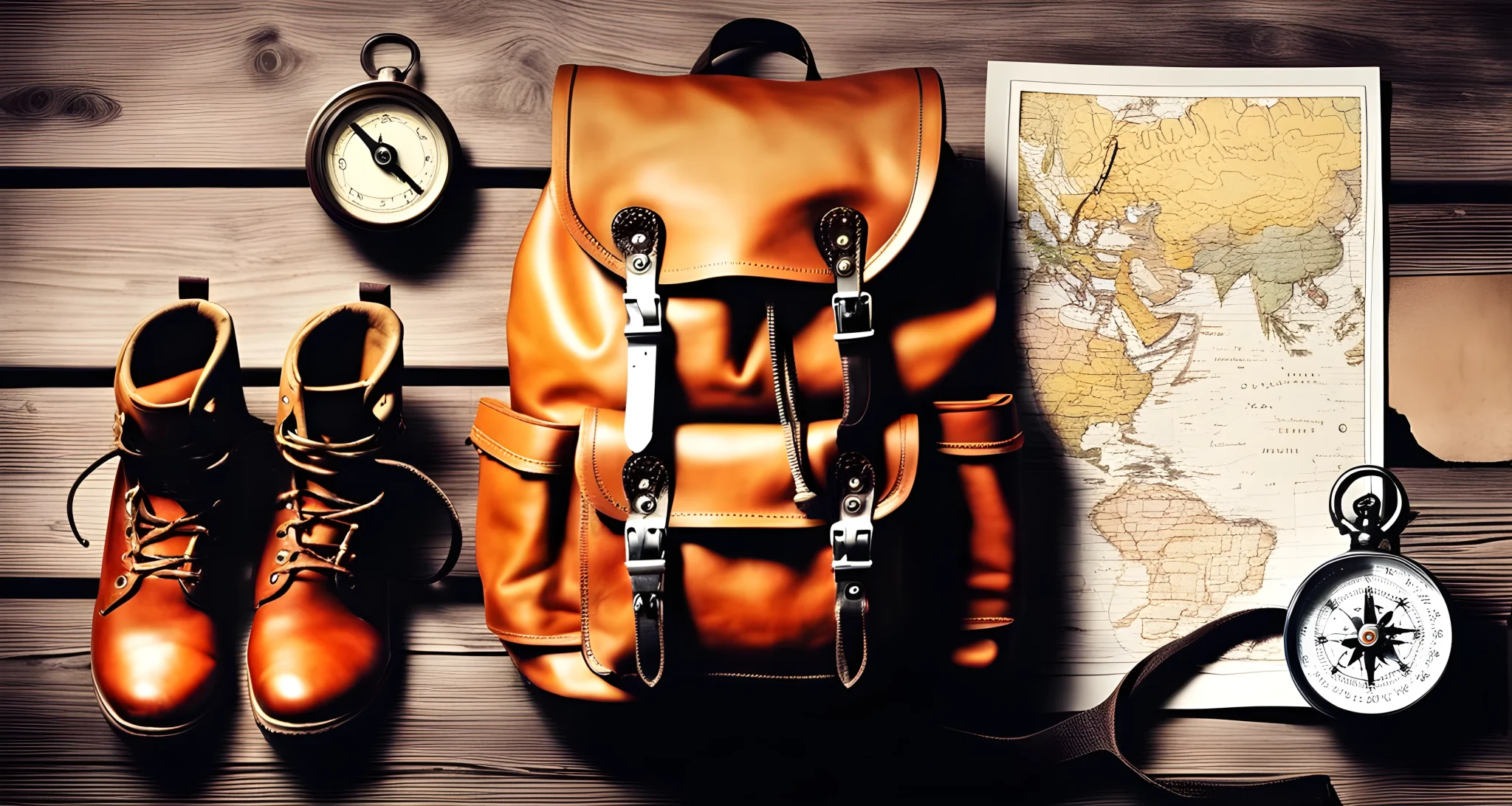
Researching Average Costs
When planning a backpacking trip, it’s crucial to research average costs for your chosen destination and duration. This will help you create a realistic budget and ensure that you have enough funds for the duration of your trip. Here are some tips for researching average costs:
-
Use Online Resources: Websites like Explore for less offer valuable information on budget travel hacks and destination-specific cost breakdowns. Utilize online travel forums, blogs, and social media groups to gather insights from experienced travelers.
-
Consider Accommodation: Look into the average prices for hostels, campsites, or budget hotels in your destination. Consider alternative options like couch-surfing or house-sitting to save on accommodation costs.
-
Transportation Expenses: Research the cost of local transportation, such as buses, trains, or rental cars, as well as any necessary permits or passes for national parks or protected areas.
-
Food and Dining Costs: Investigate the average prices of groceries, dining out, and street food in your chosen destination. Hydration and food are essential for sustaining energy during backpacking trips, so it’s important to plan your food supply carefully.
-
Activities and Excursions: Research the costs of any activities or excursions you plan to participate in during your trip. Look for free or low-cost options for entertainment and cultural experiences.
-
Emergency Funds: It’s also wise to budget for unexpected delays or emergencies by setting aside some emergency funds. Plan ahead by bringing along a water treatment system to ensure access to safe drinking water and packing some emergency rations.
By thoroughly researching average costs for your backpacking trip, you can create a detailed travel budget spreadsheet that accurately reflects the expenses you’ll incur. This will help you refine your budget with expense categories, ensuring that you have enough funds to enjoy a memorable and stress-free adventure.
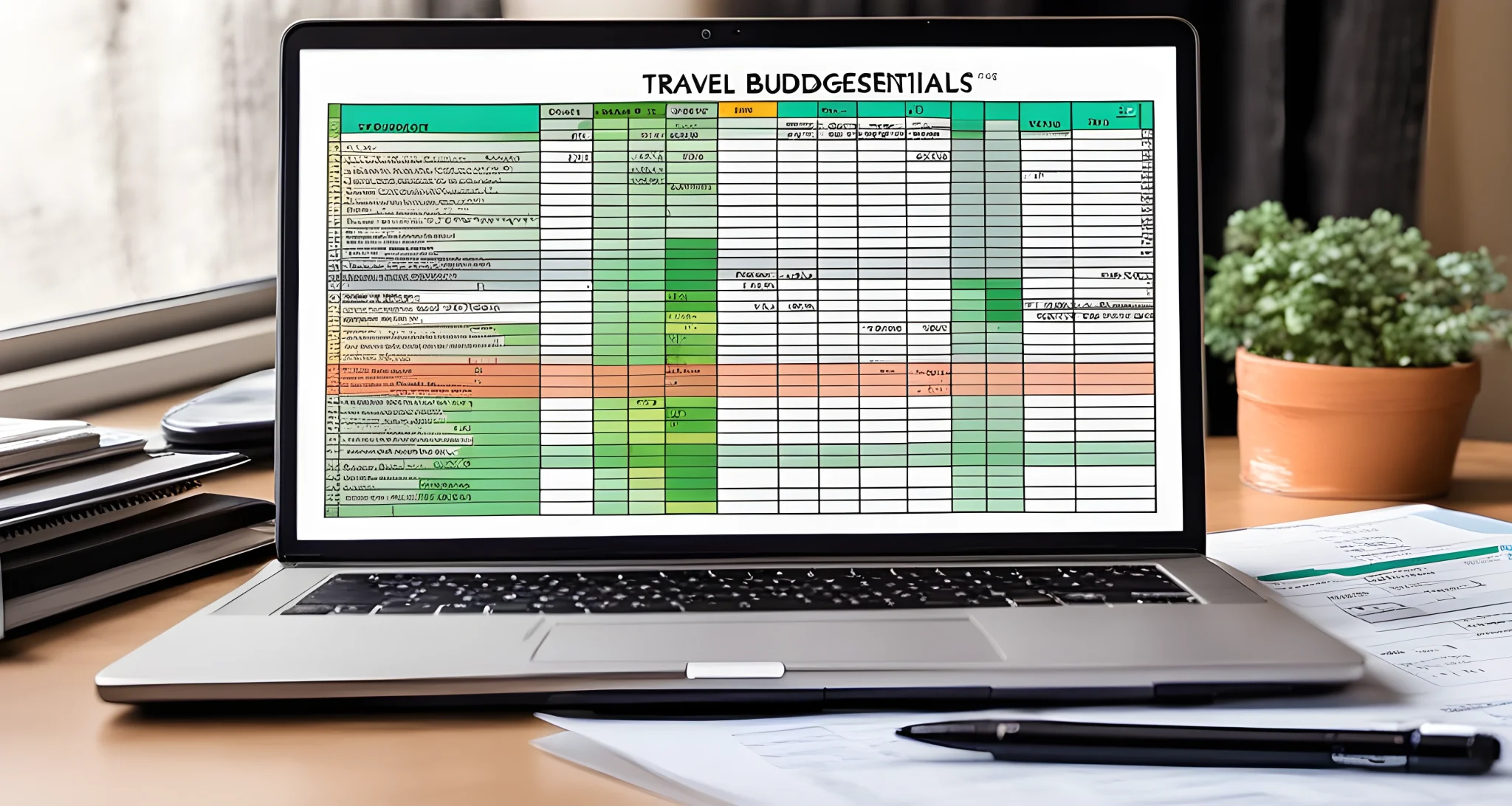
Creating a Detailed Travel Budget Spreadsheet
When planning a backpacking trip, creating a detailed travel budget spreadsheet is crucial for managing your finances and ensuring a successful journey. Here are some key steps to consider when creating your budget spreadsheet:
Selecting the right destination and estimating the duration of your backpacking trip
- Research Frugal Solo Travel Advice to get tips on how to save money while traveling alone.
- Consider travel costs, accommodation expenses, and daily expenses in your chosen destination.
- Estimate the duration of your trip to help determine the overall budget for your adventure.
Researching average costs
- Research and understand the average costs associated with your travel destination.
- Take into account expenses such as transportation, food, accommodation, activities, and any visa or travel insurance fees.
Creating a detailed travel budget spreadsheet
- Use a spreadsheet software or template to create a detailed budget for your trip.
- Include categories such as transportation, accommodation, food, activities, visa fees, travel insurance, and emergency funds.
- Allocate specific amounts to each category based on your research and estimations.
Refining your budget with expense categories
- Break down each category into subcategories to further refine your budget.
- For example, under "food," you can include subcategories such as groceries, dining out, and snacks.
- This level of detail will help you track and manage your expenses more effectively during your trip.
By creating a detailed travel budget spreadsheet, you can ensure that you have a realistic understanding of the costs associated with your backpacking trip. This will help you align your financial resources with your travel goals and avoid overspending. With careful planning and budgeting, you can enjoy an unforgettable backpacking adventure without worrying about financial stress.
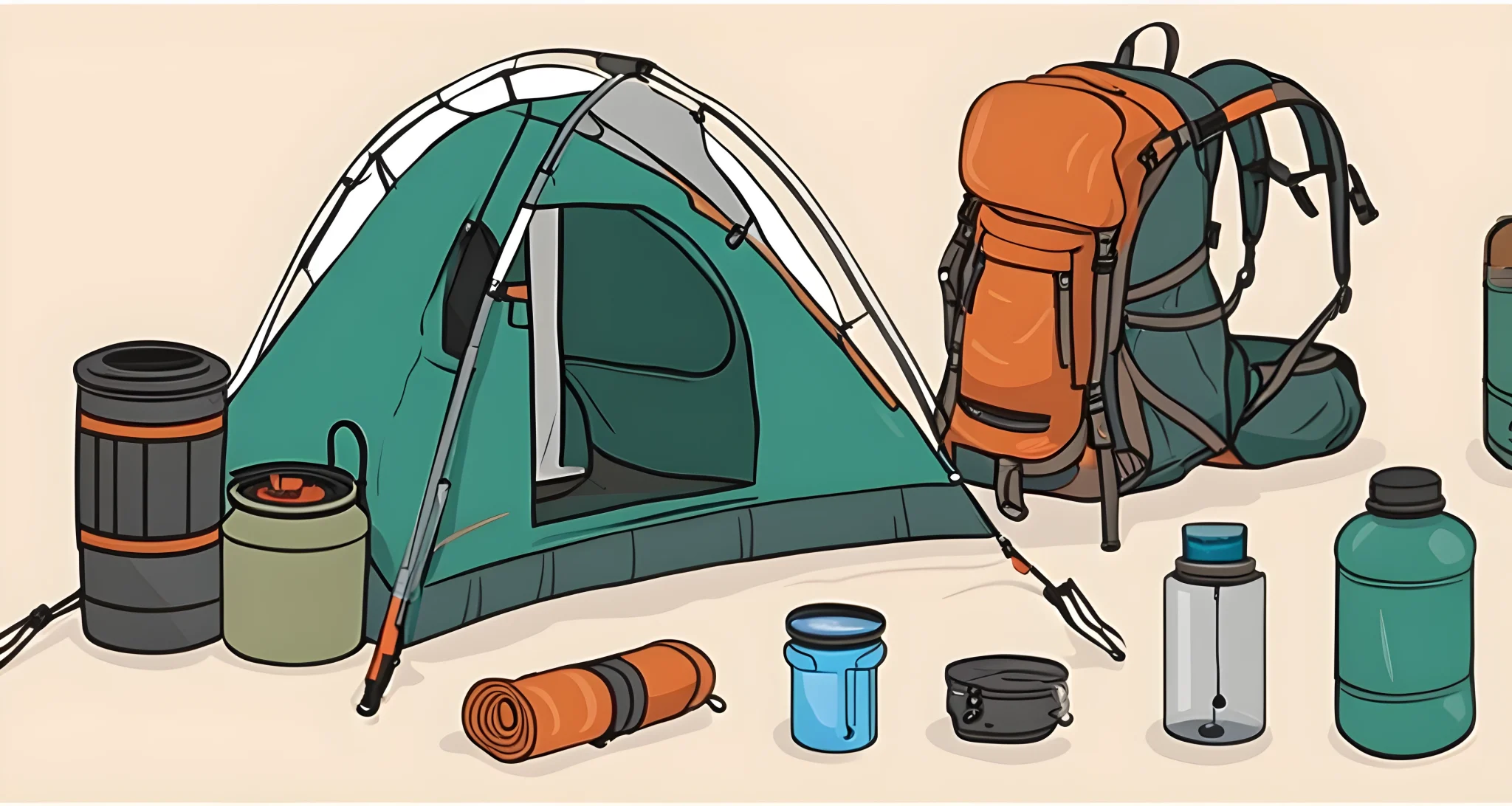
Refining Your Budget with Expense Categories
Now that you have your basic travel budget in place, it’s time to refine it by breaking down your expenses into specific categories. By doing so, you can gain a clearer understanding of where your money is going and where you might be able to make adjustments. Here are some tips for refining your budget with expense categories:
-
Transportation: Include all forms of transportation, such as flights, trains, buses, taxis, and rental cars. Don’t forget to budget for local transportation at your destination as well.
-
Accommodation: This category should cover all costs related to lodging, including hostels, hotels, guesthouses, or camping fees. Consider the average nightly rate and the number of nights you plan to stay.
-
Food: Estimate your daily food expenses based on the average cost of meals at your destination. Consider dining out, groceries, snacks, and drinks.
-
Activities: Budget for sightseeing tours, museum entrances, outdoor activities, and any other experiences you want to enjoy during your trip.
-
Emergency Funds: Set aside a portion of your budget for unexpected expenses or emergencies. This can include medical costs, lost or stolen items, or sudden changes in travel plans.
By breaking down your budget into these specific categories, you can more easily identify areas where you may be overspending or where you have room to cut costs. For example, if you notice that you’re consistently spending more on dining out than on groceries, you may decide to adjust your food budget accordingly.
Additionally, referring back to the article Vital Budget Travel Suggestions can provide additional tips for refining your budget and managing expenses while backpacking. With a detailed travel budget spreadsheet that includes these expense categories, you’ll be better equipped to stay on track financially without sacrificing the quality of your travel experience.
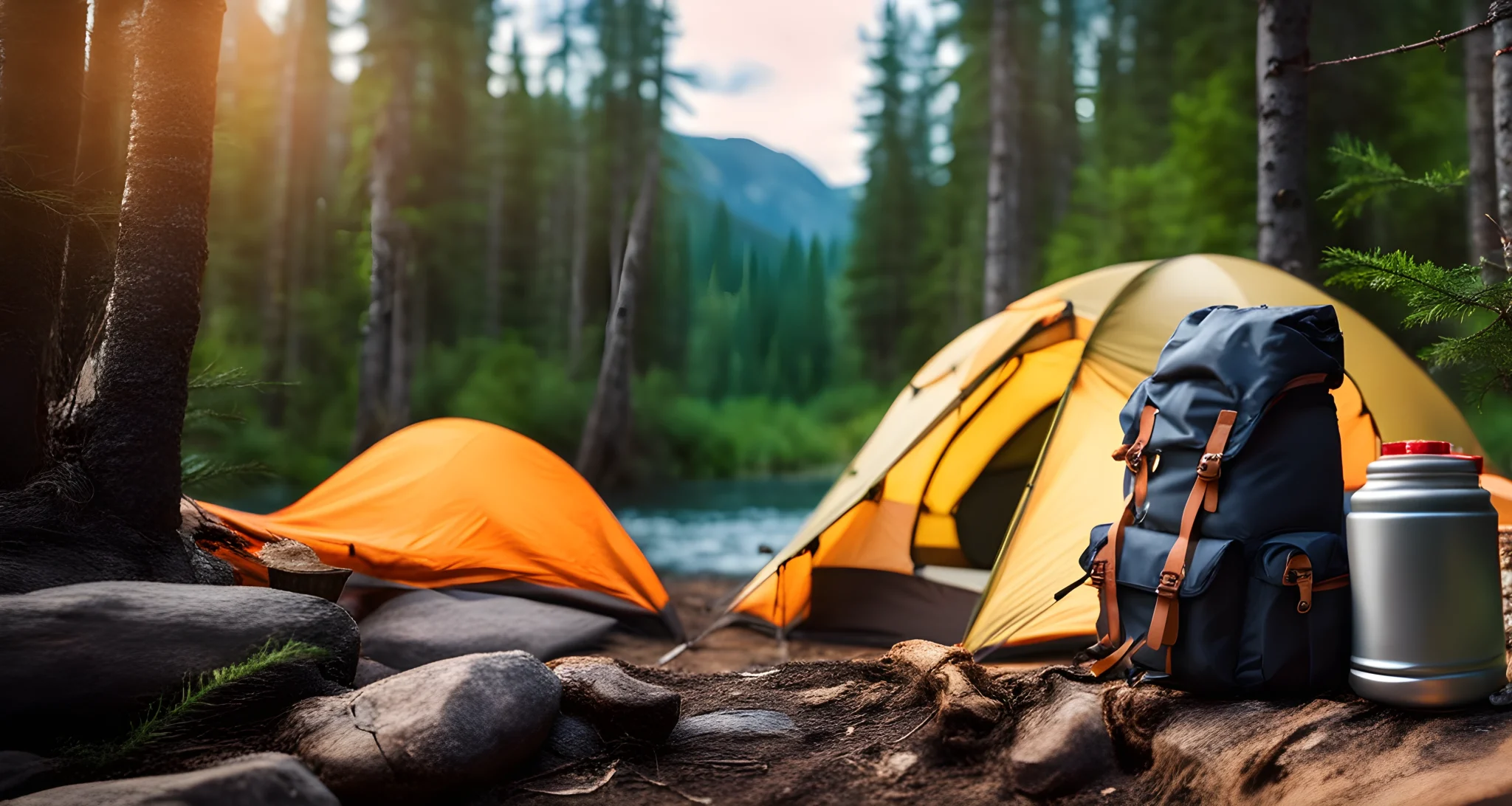
Budgeting by Item or Category
When it comes to budgeting for your backpacking trip, it’s important to break down your expenses into specific categories to gain a clearer understanding of where your money is going. By refining your budget with expense categories, you can make adjustments as needed and ensure that you stay within your financial limits while still enjoying a fulfilling experience.
Here are some tips for budgeting by item or category:
-
Gear: Allocate a specific amount for gear such as a backpack, sleeping bag, tent, hiking boots, and other essentials. Researching average costs for these items can help you set a realistic budget.
-
Permits: If your backpacking trip requires permits for national parks or other locations, be sure to include these costs in your budget. Researching average permit fees will help you allocate the right amount of money for this category.
-
Transportation: Whether it’s bus tickets, train fares, or gas for your car, transportation costs can add up quickly. By budgeting for transportation expenses, you can ensure that you have enough money set aside for getting to and from your destination.
-
Food and Water: Plan out how much you’ll need to spend on food and water during your trip. Consider purchasing non-perishable items in bulk to save money and reduce waste.
-
Miscellaneous Expenses: It’s important to have a buffer for unexpected costs that may arise during your backpacking trip. Setting aside a specific amount for miscellaneous expenses will help you be prepared for any surprises.
Refining your budget with these expense categories will help you make the most of your backpacking trip without overspending. By creating a detailed travel budget spreadsheet and allocating specific amounts for each aspect of your trip, you can ensure that you have a clear understanding of where your money is going and make adjustments as needed.
For more tips on budget travel, check out Inexpensive travel suggestions for helpful information on how to travel the world on a budget.
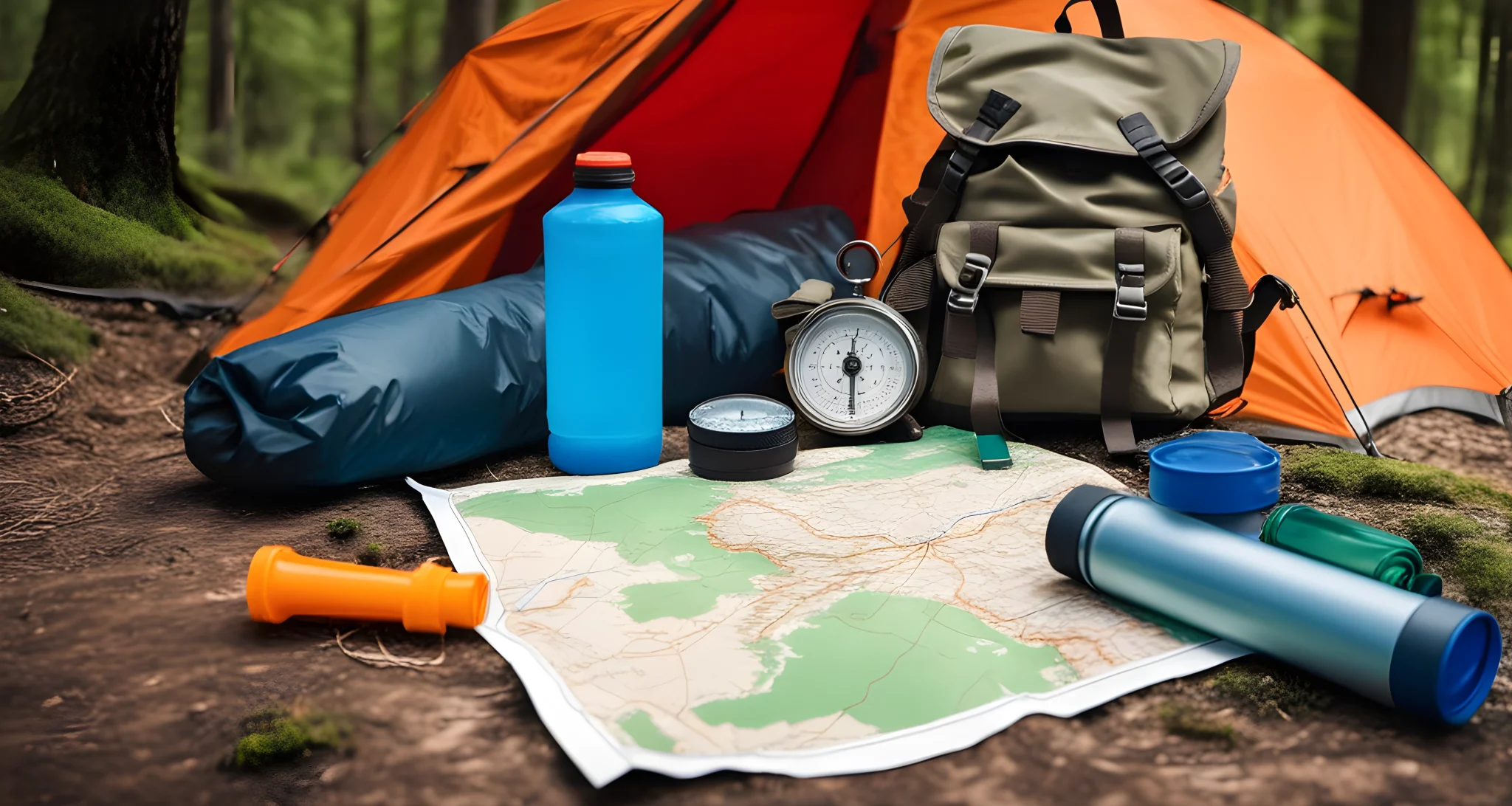
Conclusion
After carefully considering your destination, duration, and average costs, creating a detailed travel budget spreadsheet and refining it with expense categories, and deciding whether to budget by item or category, you are well-equipped to embark on a budget backpacking adventure. Remember to be flexible and open to adjustments as you navigate your journey. Keep track of your expenses and be resourceful in finding cost-effective alternatives without compromising on safety and comfort.
Utilizing the essential gear mentioned in this article, budget backpackers can experience the joys of backpacking while minimizing financial strain. Whether it’s a lightweight tent, a durable backpack, or a reliable water filtration system, having the right gear is essential for a successful backpacking trip.
By following the steps outlined in this article, you can confidently plan and execute a budget-friendly backpacking adventure. With careful planning and thoughtful consideration of your expenses, you can make the most of your journey without breaking the bank.
For more tips on solo budget travel, check out our article on Budget travel solo adventure for the ultimate guide to traveling on a budget. Happy backpacking!
FAQ
What are some essential shelter and sleep system gear for budget backpackers?
Budget backpackers should consider a lightweight and compact tent like the big agnes fly creek, a synthetic sleeping bag such as the sierra designs cloud 20, and a comfortable and compact sleeping pad like the klymit insulated static v.
What navigation and safety gear should budget backpackers carry?
Budget backpackers should carry a gps unit and a paper map for navigation, as well as an emergency communication device like the inreach se. it’s also important to have a basic first aid kit, a headlamp, and extra batteries for nighttime use.
How can budget backpackers ensure hydration and food supply during their trip?
Budget backpackers should bring a water treatment system for safe drinking water, such as purification tablets or a portable filter. for food, they should plan for lightweight and nutritious options like energy bars and jerky, aiming for about 2-2.5 pounds of food per day plus emergency rations.
What are some additional tips for budget backpackers when it comes to essential gear?
In addition to the essential gear mentioned, budget backpackers should also consider carrying pain and inflammation medication, disinfectant wipes, tape, bandages, and insect repellent in their first aid kit for added safety and comfort during their trip.
